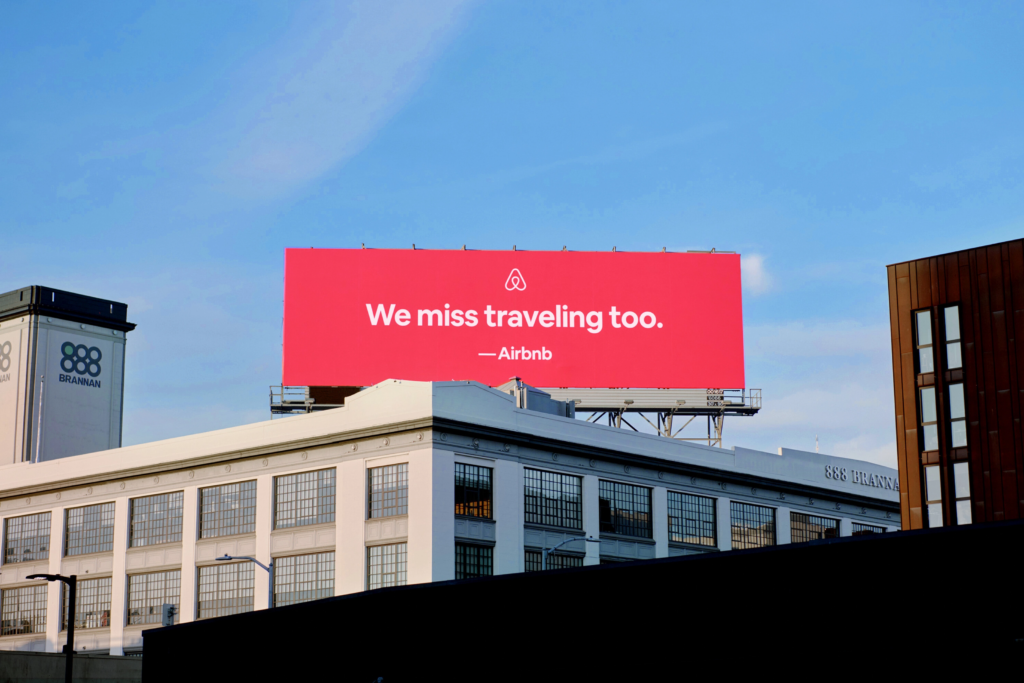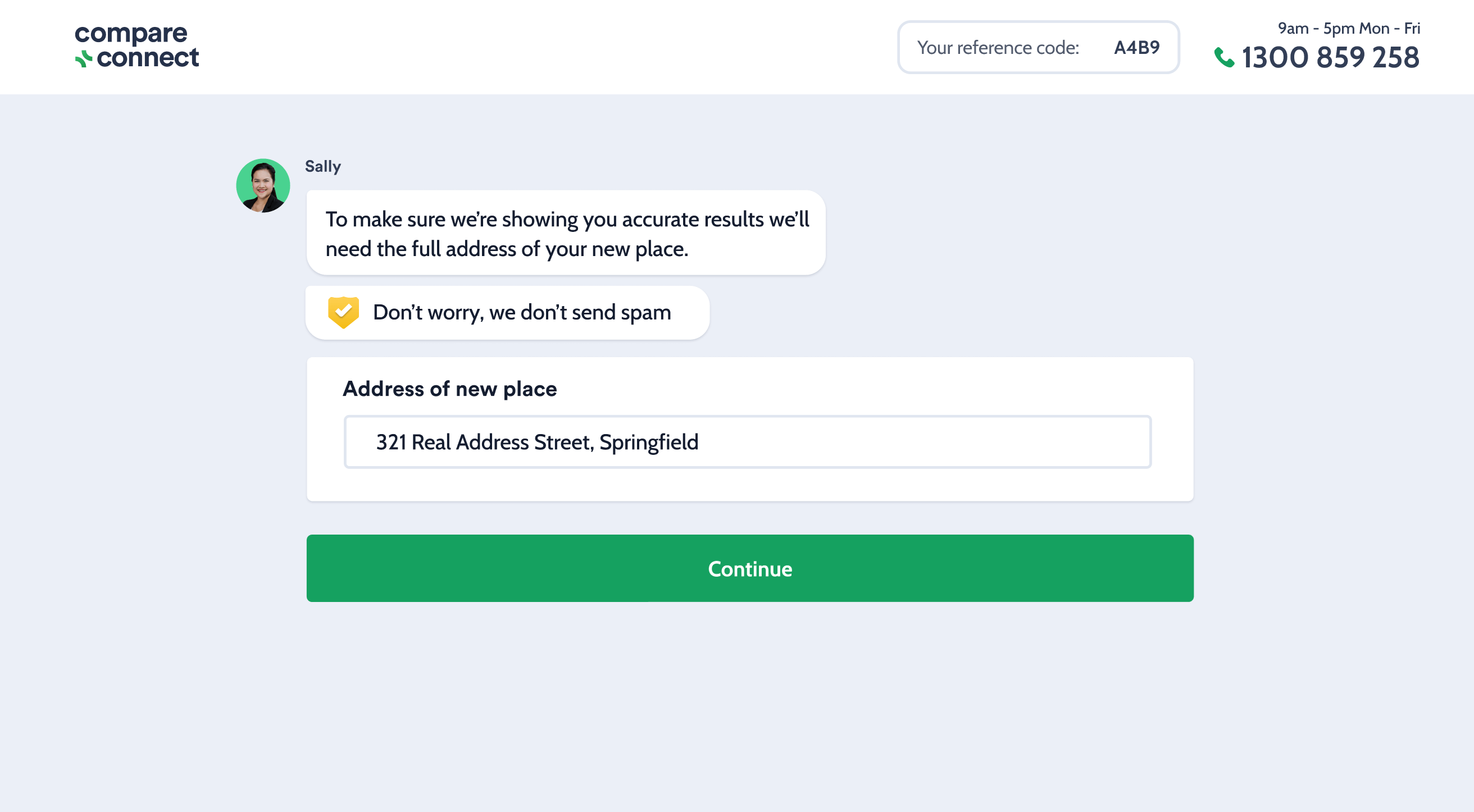
4 Steps To Building A Strong Brand For Your Business
“In such a competitive landscape…” We’ve all heard this at a start of a sentence. But, it couldn’t be any more relevant. With so much competition, companies are fighting to crawl to the top, doing everything they can to set their brand apart from the rest. This is resulting in an arduous task for business owners… How do you stand out when everyone else is trying to do almost the exact same thing?
Table of Contents
Benefits of Strong Branding
It’s getting harder and harder to be unique, but there are a lot of benefits to reap from creating a solid brand, including:
❤️ Increased customer loyalty – if a user has a sense of attachment to your branding, it will affect their opinion and commitment to your company and product as a whole. How many times have you wanted a product because ‘it looks/sounds cool’?
👋 Helps you stand out – a unique brand allows you to set yourself apart from the others within your industry by making you memorable.
✅ Adds credibility – Having an established and clear brand will make you look like an expert. If you appear to know what you’re talking about and come across as a professional, people will likely buy from you.
👥 Allows you to attract your ideal clients – branding can be used strategically to attract a particular audience. How you do this will be different depending on your company, but a great way to start is through market and user research.
💼 Employee and recruitment retention – while there are many other factors that affect employee and recruitment retention, a solid brand with a good reputation can encourage and increase loyalty from both a customer and an internal perspective.
🎯 Gives you a strategy – a solid brand foundation can be built on for future implementations or actions.
Branding is so much more than a few fonts and a colour palette. Below we will delve into a few steps that will help you on your way to developing a cohesive, consistent and unique brand.
Some Trusty Steps
1. Get your story straight
It all starts with a story. A brand story is basically a cohesive narrative that encapsulates your brand as a whole. It encompasses the who, what, when, where, why and how of the creation of your company.
As humans, we are wired to respond to a well-constructed narrative. The neural activity in our brain increases fivefold when hearing a story. It illuminates our mushy little brain. When we’re hearing a story and our brain is lighting up, we have all of these neurons wiring together, which triggers us to remember more of the information we’re getting. Stories also do something extraordinary: they trigger the release of the neurochemical oxytocin, also known as ‘the love drug’. Stories make us remember, and they make us care. You can read further into the neuroscience of storytelling with this great article here.

Basically, humans crave and seek captivating stories. With this in mind, it makes sense that a well thought out brand story can capture the interest (and hearts) of our users. An emotional response is the goal of a good story, giving readers a sense of attachment, but it also instils a level of confidence and reputability in the company. If you’re too vague in your story, users may not feel like they can trust you.
No story is the same, and whilst this isn’t the only way to tell it, a recommended structure goes as follows:
- A background 📖 How did your company / idea come into formation? Who was there? What inspired you?
- A problem / conflict 💥 What is the gap in the market that you’re trying to fill? What did you notice users struggling with? What is the issue you’re trying to solve?
- A resolution 💡 How have you solved the problem / conflict? What game-changing offerings are you providing and how will they benefit others?
Starting a story can feel intimidating, and starting is the hardest part. But storytelling has proven time and time again to be an integral part of formulating a strong brand.
2. Find your purpose and promise
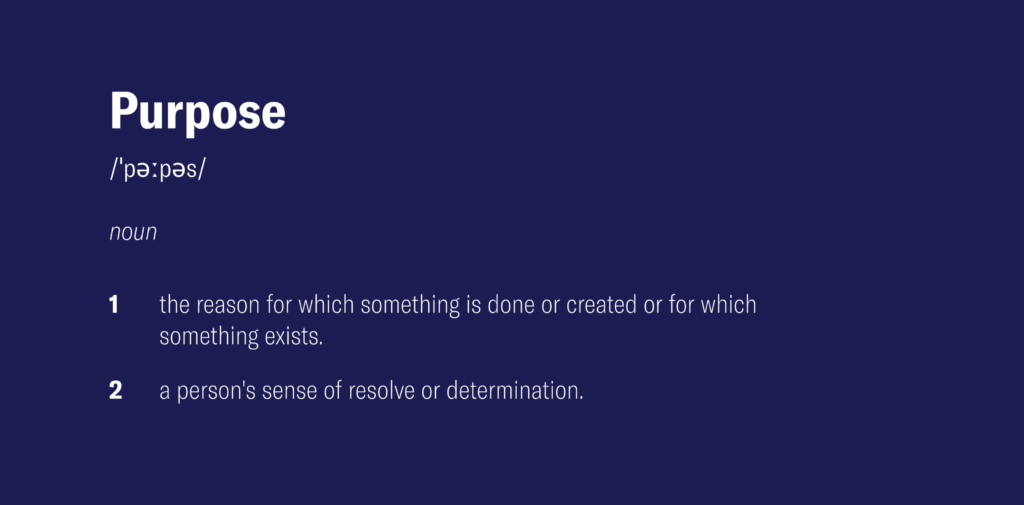
This technically falls under your brand story, as your purpose is pivotal to the company’s existence. However, it is a nice follow up from your ‘resolution.’ Because a solution to a problem is great, what can you genuinely guarantee to your users to instil further confidence and trust in the brand?
In the words of Elon Musk himself: “Putting in long hours for a corporation is hard. Putting in long hours for a cause is easy.”
According to Edelman’s Brandshare report, 87% of respondents worldwide say they want a “meaningful relationship” with brands.
The positive impact that a brand purpose can have on your business is backed up by data. According to this article by Afdhel Aziz,
Jim Stengel, the former CMO of Procter and Gamble in his book ‘Grow’ showed the results of a 10-year study of 50,000 brands and found that the ones centred around improving people’s lives beat their category competitors by significant margins.
What’s more, it revealed that:
- the 50 highest-performing businesses are the ones driven by ‘brand ideals’ (his term for purpose)
- These 50 businesses grew three times faster than their competitors
- An investment in them would have been 400 per cent more profitable than an investment in the S&P 500.
Some examples that Aziz mentions that can be fields of purpose for a brand include:
😁 Eliciting Joy
❤️ Enabling Connection
🔍 Inspiring Exploration
👏 Evoking Pride
👩👦👦 Impacting Society
Regardless of your field, Douglas Atkin, former Global Head of Community at Airbnb, put purpose creation simply in these three steps:
1. Ground the Purpose in an experienced Truth
Your purpose is to be grounded in the experience of your users. What role do you play in their lives? Is it different from what had come before? Is that role the source of their commitment? And for employees at the company too: why are they committed and what role does the company play in their lives?
2. It should be transformative. It should seem impossible (but actually be improbable)
Douglas states, “It should be exciting enough to get out of bed for, and inspirational enough to keep you going through the tough times.” It will excite your users when you provide a solution to a seemingly difficult/impossible-to-solve problem. Airbnb was driven by ‘Creating a world where Anyone can Belong Anywhere’ – breaking down barriers caused by cultural, racial and geological differences.
3. It must be about ONE BIG THING. It must be specific enough but broad enough.
It needs to be concise enough to function as a guide, ensuring everything at your company is sticking to this overarching purpose. However, it also needs to be broad so that it can adapt to future company iterations and improvements. Change can happen; it’s inevitable, but developing a timeless and universal purpose is the end goal.
A brand promise can be articulated in a brand promise statement, which is separate from the tagline. This statement can be used internally and externally to clarify the brand’s commitment to the provided experience. Whether or not you articulate your promise, you can rest assured your audience will assume your commitment to one.
Other great questions to ask yourself throughout the branding process and for the future include:
- Are you being sincere? One simple way to counteract scepticism is to be sincere. If there is criticism, then listen, adapt and grow from it.
- So, commit to adapt. The world is ever-changing. It is a company’s responsibility to adapt to this change, driving their team and users into the future. Sometimes old ways, statements or purposes can become irrelevant, and it is important to not get stuck in the sand and be open to adapting.
3. Assess your Positioning – be different, focus
Brand positioning is about owning a unique position in the mind of the target consumer
Qualtrics
It is basically your influencing the consumers’ attitude toward your brand. Similarly to how your product fills a niche in the marketplace, its image fills up space in consumers’ minds and hearts. Amongst the fierce competition, positioning your company enables you to find a foothold in the marketplace. It’s a fantastic marketing tool if used consistently and smartly. The difficulty lies not in the methods themselves but in determining which ones will suit you and where you should put in the most effort.
The positioning strategy includes three main stages:
Determining the current position
Assessing your Positioning can include analysing a multitude of factors, but three overarching factors that have a significant impact on your company as a whole are product, image and price. From here, you can place these factors into a prioritisation matrix and add your competitors in too to see how you compare.
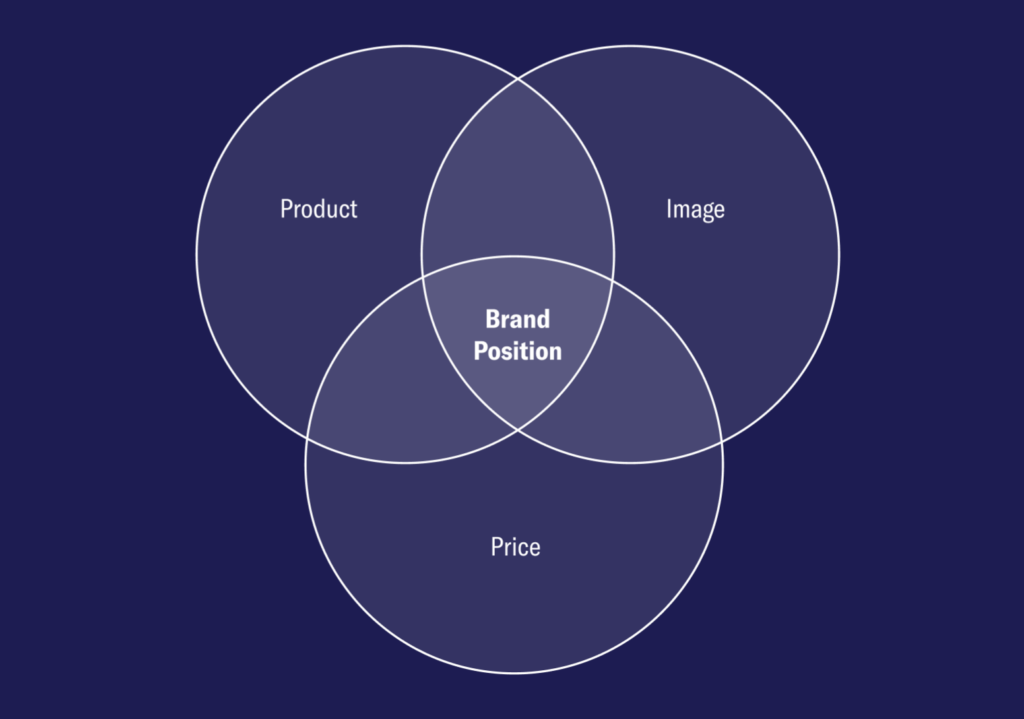
Choosing the desired position.
From your prioritisation matrix, you can decide where you want to move along the graph, e.g. do you want to be more reputable? More affordable? More high-end? More approachable?
Developing a strategy to achieve the desired position.
Once your desired position has been outlined, you can move into the how. How will you as a team approach this new position in the market, and how will you get there?
Brand positioning also works as an excellent grounding tool throughout the branding process. It pulls you back to your initial goals, ensuring you don’t get too lost along the way.
Personality + Tone of Voice
Bringing a particular personality to your brand can add a human element, drawing the user in and creating a sense of attachment. When a brand speaks your language and expresses your values, you begin to gain trust as a consumer. In addition, something that feels familiar requires little effort to evaluate and process, and you are more likely to feel at ease around it. If the voice is your brand’s personality and traits, then the tone is all the different ways you express that personality. Of course, personality and tone are two other things, but they go hand-in-hand in creating a brand image.
Steps to take to uncover this personality and voice include:
Research
To get direct qualitative insights, user interviews are an excellent way to get opinions on your current or potential brand, listen to how the users speak, discover what they’re searching for and hear ideas about competitors.
Another great tool is conversation mining, where you head to forums or sites online where your users typically head.
Create your guideline
- Who is speaking on behalf of your brand? Brands stand out not only by how they position themselves in the marketplace but also by how well they connect with customers. A way to define your brand’s tone of voice is to humanise it in a sense, developing a personality that reflects your values and can carry it throughout the company. Defining a person speaking on behalf of your brand is a great way to get the ball rolling in the tone of voice.
- How do they speak? How does your voice speak? Is it serious? Or playful? Do they come across as authoritative? Or are they more of a friend with a casual demeanour? While it’s essential to remain consistent with your tone of voice, there is definitely a time and place for different styles. For example, if you had quite a playful and fun voice, you would still want to convey a sense of legitimacy if your platform had some form of payment or investment. This is because a user wants to feel assured that the platform they are using is legitimate.
- What is their viewpoint? What values do they hold? Due to this voice being a driving force in expressing your brand, the voice and words must stay consistent with your overall brand’s viewpoints and values.
Brief your team
Once you have your personality and tone of voice set, it’s vital to get the rest of the team on board. Regardless of whether they have direct involvement with branding or design, it is important that everyone is able to grasp the brand’s personality so that it can reflect in their daily work actions. From customer service to stakeholder management to a payment confirmation to a social media post, your voice carries throughout all levels of your business; therefore, it needs to stay consistent.
4. Refining your visuals
Logos
A logo doesn’t sell (directly), it identifies.
Paul Rand
Whilst a logo isn’t responsible for selling your product, it is the primary visual indicator for the company, allowing people to identify who you are from a concoction of possible words, shapes and colour combinations.
A logo should be:
🧠 Simple and memorable. Your logo needs to be easily identifiable and avoidant of complexities. You don’t want to have people questioning or analysing your logo in confusion. It should be an instant “Ah- that’s (brand name)!”
⏱ (Relatively) Timeless. I added the term ‘relatively’ as logos are not entirely immune to fads and trends. They are — after all — created by people, and we’re fickle by nature. We’re influenced by the latest trends, whether we like it or not. Even big brands like Google, Pepsi, Nike and Instagram have iterated over time to match the modern world.

🔀 Versatile. A logo needs to adapt to multiple physical and digital mediums, so it is important to have a logo that can be altered or manipulated slightly to match these different areas. An example could be having a vertical and horizontal version of your logo if you have text or a logo that is still totally distinguishable and readable in monochrome.
👶 Appropriate. A brand/company is usually fit for a particular audience, and a logo needs to reflect this. For example, a toyshop logo would ideally be youthful, playful and colourful, whilst a financial institution may steer more towards a serious look with minimal colouring.
Typography
Typography selection is dependent on your personality and the values that you want to portray. There are six primary font classifications as pictures below: Serif, Sans-serif, Slab serif, Script, Handwritten, Decorative. Each type can convey different personality traits.
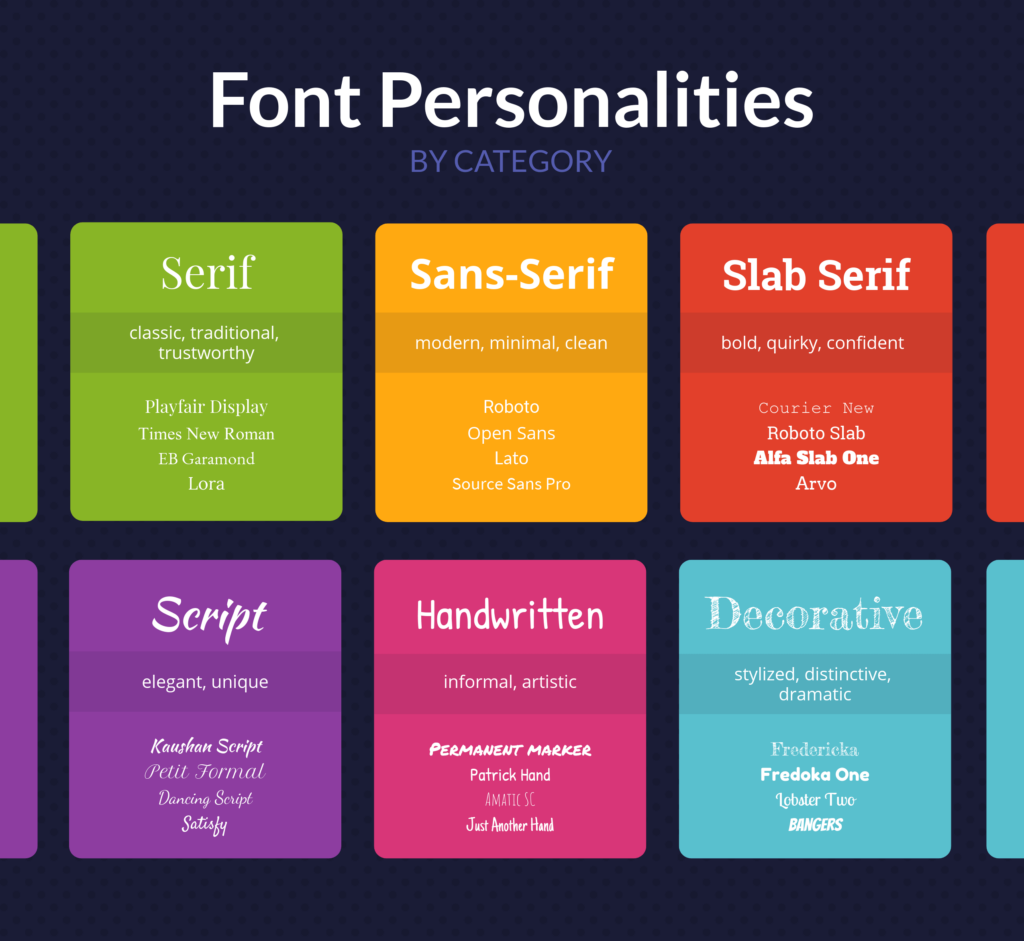
A common practice is to combine two types in your platform or product, like a serif for a nice touch to headings and a sans-serif for a body text for extra readability.
It is truly dependent on how you want to portray your brand, and it might take a few iterations.
Colour palette
Colours ignite emotions and feelings and convey specific information or values, e.g. blue for trust, red for danger, green for success or nature. These values can vary from culture to culture, but overall, colour enables customers to form an initial impression without even knowing what your product is about.
Let’s take a household name like Google. The original designer of the Google logo, Ruth Kedar, said many different colour iterations were considered. The primary colour palette pays homage to the original server’s storage built from oversized Legos. The solo green ‘L’ was also added intentionally. The steering away from the primary colours of the other lettering shows that Google isn’t afraid to break the rules and are constantly trying something new.
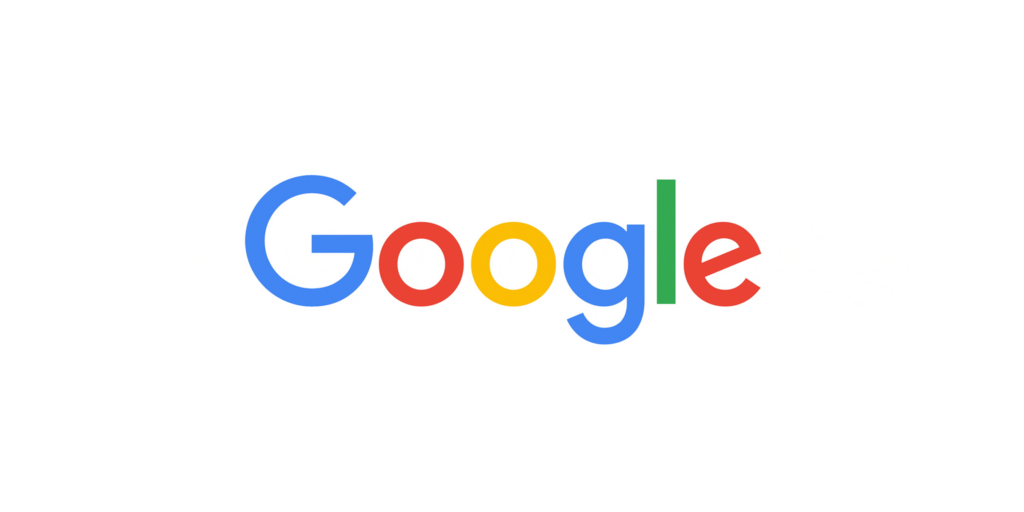
If you’re eager to learn what emotions or values different colours emphasise, Canva does an excellent article on this here.
As your colours are reflected across many areas, including logo, website, social media, staff uniform, physical stores, and advertising, it is crucial to find a palette that is suitable to the entirety of your brand universe.
Imagery and illustrations
Depending on your industry and how you want to portray yourself to users, imagery and illustrations are an excellent way to convey your brand personality and add a personalised touch to a digital screen.
But it’s important to note that illustration style needs to stay consistent across platforms and areas of the company in order to maintain an image of uniformity and reputability.
Wrap Up
The best kind of brand is built on a firm idea. Ideas that you can hold onto as a team and resonate with your audience. You don’t just want customers who recognise your brand and use your business once. You want to create loyalty and have them coming back for more. With good branding, you develop a more human element that your customers can relate to more than a profit-centric company that’s strictly all business. Understanding your target market and appealing to people’s emotions through branding makes them feel more connected to your company. In addition, it allows you to build relationships with your audience, which can eventually turn them into loyal customers. So, it’s time to create a concept that people care about and put yourself ahead of the competition, resulting in a timeless and robust brand.
Take your company to the next level and get results with our world class user experience, interface design and implementation.
Get a FREE 30 min Strategy Session

Related posts
Case study: How Duolingo Utilises Gamification to Increase User Interest
“We created Duolingo in 2011 with a mission to develop the best education in the world and make it universally […]
A Quick Guide to Mobile-First Design
So, why mobile? 🤷♀️ Well, because mobile is now everything – with over 55% of web traffic coming from mobile […]
3 Ways to Increase Customer Loyalty with UX
To put it simply, no customers = no business Gaining and retaining customers is such a crucial component to a […]
Creative product design that gets results
Take your company to the next level with world class user experience and interface design.
get a free strategy session


